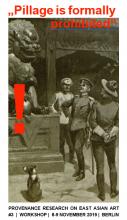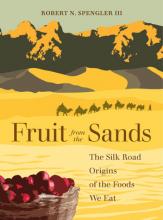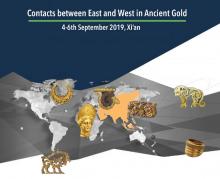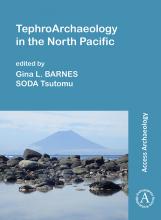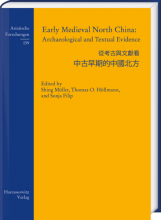'Pillage is formally prohibited.' Provenance Research on East Asian Art #3
Mesdames et Messieurs, chers collègues,
Nous sommes très heureux de vous faire parvenir le programme du premier atelier international de recherche 'Pillage is formally prohibited'. Provence Research on East Asian Art sur la translocation des objets chinois, japonais et coréens à l'Europe et aux Etats Unis qui aura lieu le 8 et 9 novembre 2019 au Musée d'art asiatique de Berlin (Museum für Asiatische Kunst, Staatliche Museen zu Berlin).
Nous serions très heureux d'accueillir de nombreux collègues français.
Veuillez vous inscrire sous cet email.
Avec nos salutations distinguées

